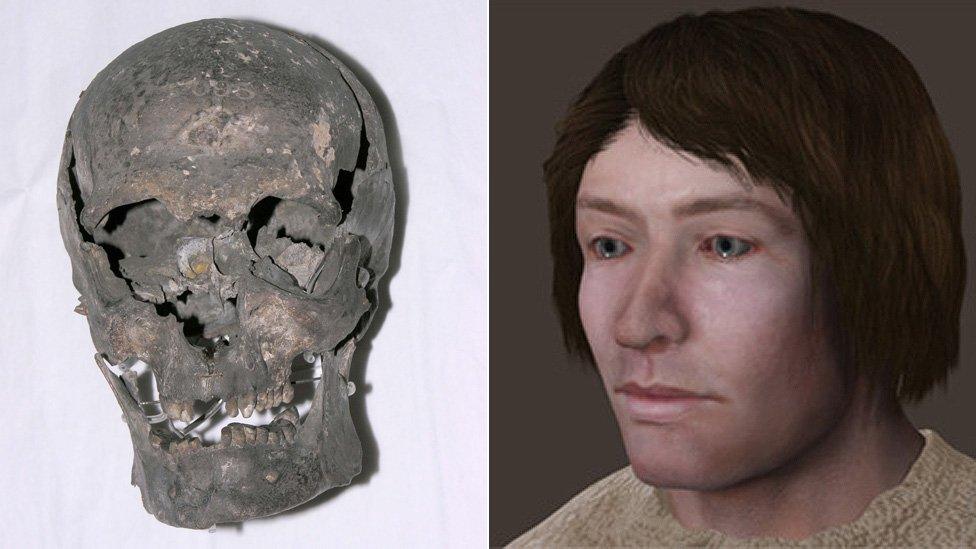Leasowe Man image released by Liverpool museum
- Published

Leasowe Man was found by workmen in 1864
A computer-generated image of a man who lived in Roman Britain more than 1,600 years ago has gone on display.
The depiction of Leasowe Man, named after the Merseyside town where he was found in 1864, is on show at the Museum of Liverpool.
It said the image "raises lots of questions... about his life".
Curator Liz Stewart said they were unable to ascertain his hair and eye colours but it was "most likely" he had the tones shown in the picture.
The image of "Merseyside's oldest skeleton" was created by researchers at Liverpool John Moores University's Face Lab, which conducts archaeological and forensic work.

Despite the coastal location, Leasowe Man is not believed to have eaten much fish
Radiocarbon dating has previously found, external that the skeleton, which is kept in the Natural History Museum's collection in London, is between 1,600 and 1,900 years old.

Leasowe Man
The skeleton was found under a bed of peat by workmen repairing the embankment at Leasowe
The owner of nearby Leasowe Castle, Sir Edward Cust, donated the remains to the Royal College of Surgeons in 1864
For more than a century the skeleton was mistakenly thought to be prehistoric, perhaps as old as 4000 BC
It is the only surviving skeleton from Merseyside from the Roman era
Source: Liverpool Museums

Analysis also shows that Leasowe Man was about 40 years old at the time of his death, and was about 5ft 6in (1.7m) tall.
His bones "showed signs of strong muscle attachments, suggesting he was physically active during his life," Dr Stewart said.
Despite Leasowe's location on the Merseyside coast, she said chemical analysis revealed that he "didn't eat very much fish, which is a little surprising for someone found so close to the sea".